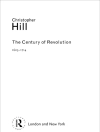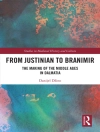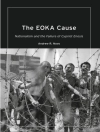From the tenor of contemporary discussions, it would be easy to conclude that the idea of marriage between two people of the same sex is a uniquely contemporary phenomenon. Not so, argues Gary Ferguson in Same-Sex Marriage in Renaissance Rome.
Making use of substantial fragments of trial transcripts Gary Ferguson brings the story of a same-sex marriage to life in striking detail. He unearths an incredible amount of detail about the men, their sex lives, and how others responded to this information, which allows him to explore attitudes toward marriage, sex, and gender at the time. Emphasizing the instability of marriage in premodern Europe, Ferguson argues that same-sex unions should be considered part of the institution’s complex and contested history.
Mục lục
Introduction: Engagement
PART I. STORIES—OBSERVERS
1. A French Writer Visits: Montaigne’s Travel Journal and a Thrice-Told Tale
2. ‘Our Marriages’? Male to Male / Like Husband and Wife
3. Marriage— Rites, Analogues, Meanings
4. Other Witnesses, Other Stories
PART II. STORIES—ACTORS
5. Final Hours: Wills and Execution
6. Voices on Trial: Beginning with Battista the Boatman
7. Saint John at the Latin Gate: Marco Pinto
8. Marriage as Alibi, as Euphemism, as Recruitment
9. Marriage and Community
PART III. HISTORIES
10. Looking Forward / Looking Back: The History of Sexuality
11. Ghost Stories: Queer History
Giới thiệu về tác giả
Gary Ferguson is the Douglas Huntly Gordon Distinguished Professor of French at the University of Virginia. He is the author of Queer (Re)Readings in the French Renaissance and Mirroring Belief.












